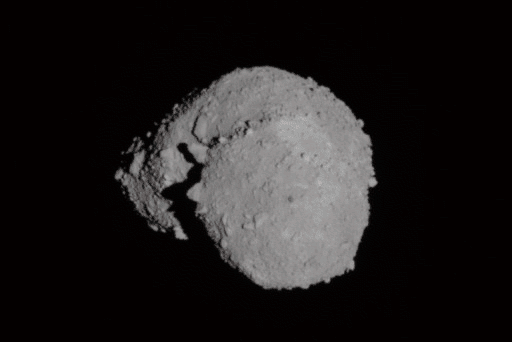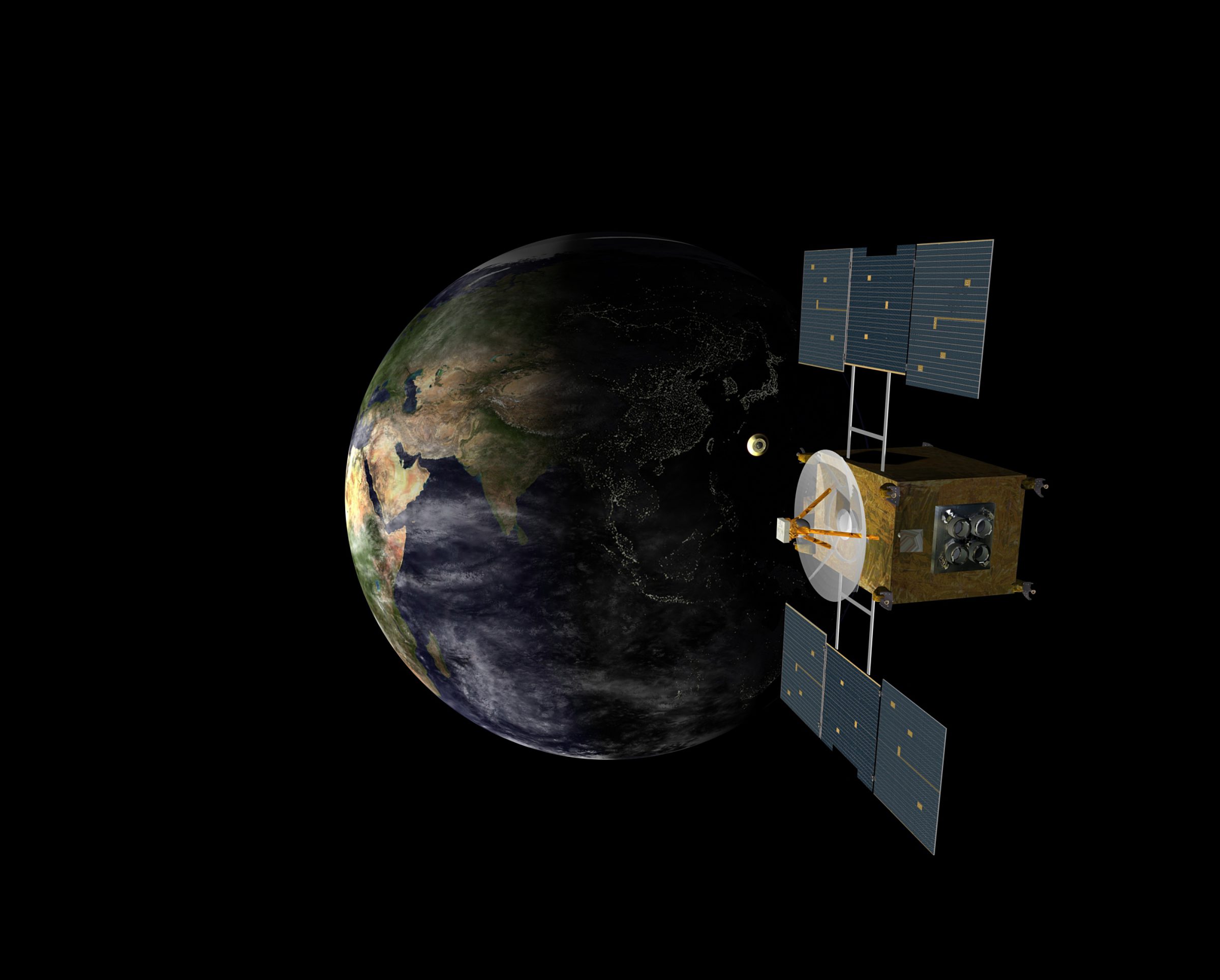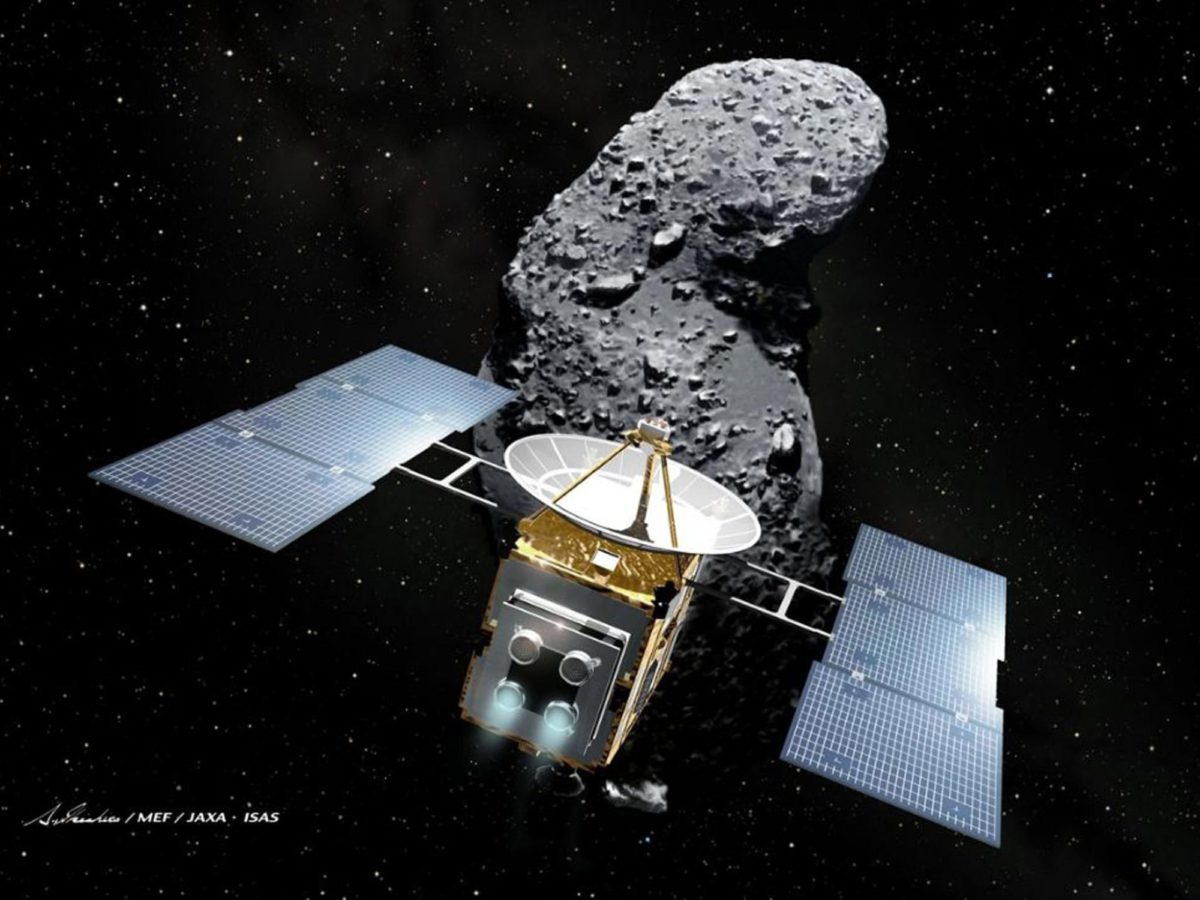Emily Lakdawalla • Jun 07, 2010
Six days left for Hayabusa: A recap of the mission
The Hayabusa spacecraft is about to die.
On Sunday, June 13, at 14:00 UTC, Hayabusa will burn up in Earth's atmosphere, bringing its dramatic seven-year mission to an end. But, in doing so, it will hopefully return a tiny capsule that will hopefully contain some dust from an asteroid, and so become the first mission ever to return a sample of material snatched from the surface of a world beyond the Moon.
I will be posting frequent updates on the status of Hayabusa during these final days. While you wait for updates, you might enjoy reading about some of this mission's dramatic history. Hayabusa's mission has been one of dizzying highs and seemingly impossible-to-overcome lows. Here are some of the highlights, with links to feature articles and past blog entries.
Hayabusa was conceived as a daring mission that would return a sample from a tiny asteroid, smaller by far than any that had been visited before. The asteroid would be so small that its gravity would be negligible; instead of entering orbit, Hayabusa would match orbits with it and grab a sample in a maneuver that was more similar to docking with another spacecraft than it was to landing on another planet.
The audacious mission required incredibly precise guidance and control of the little spacecraft. The solar-powered craft was fitted with four gimbaled ion engines as its main thrust source, a more traditional chemical thruster system (actually, two separate systems for redundancy) for maneuvering (particularly important for the delicate operation of touching down on the asteroid), and three reaction wheels for control of the spacecraft's orientation in space. It had a sampling horn that would contact the asteroid, fire pellets at its surface to knock asteroid dust off, and enclose the flying asteroidal material into a sample return capsule equipped with heat shield and parachute.
The spacecraft launched as "MUSES-C" on May 9, 2003, aboard an MV-5 rocket, from the Uchinoura Launch Center, Kagoshima, Kyushu, Japan. After its launch, it was renamed "Hayabusa," or "peregrine falcon."

Hayabusa's near-Earth asteroid target was chosen not because of any particularly special qualities of the asteroid itself. Rather, the asteroid was picked on the basis of what Hayabusa could reach, given its launch date and the capabilities of its ion-powered flight. In fact, Hayabusa's eventual destination was only first discovered less than five years before the spacecraft launched toward it. (In this way, the Hayabusa mission is similar to the Kuiper belt mission of New Horizons -- that spacecraft will be aimed for some small Kuiper belt object or objects that still have yet to be discovered.)
Hayabusa's target asteroid had been provisionally named 1998 SF36 when it was discovered by the LINEAR project, and received the formal numerical designation 25143 shortly after. After Hayabusa launched, it was formally named Itokawa after Hideo Itokawa, who is regarded as the father of Japanese rocketry, and who oversaw the first orbital Japanese launch in 1970.
Hayabusa's challenges began in November 2003, when it suffered damage from one of the biggest solar flares in recorded history. The flare reduced the efficiency of the solar cells, which, in turn, reduced the thrusting power of Hayabusa's ion engines, delaying the spacecraft's arrival at Itokawa. Additionally, one of the four ion thrusters, Thruster A, did not function to specifications, and was not used; but the mission had been designed to operate on only two thrusters, so this posed no serious problem.
The spacecraft flew on. In May 2004 it became the first spacecraft to perform a gravity-assist flyby using ion engines as the main thrust source. As it approached its target, one of its three reaction wheels (the X-axis wheel) failed, but the remaining two were sufficient to maintain three-axis control of the spacecraft's orientation. Hayabusa imaged Itokawa for the first time on September 5, 2004.

Its approach to Itokawa officially began in September, 2005, when the spacecraft's camera first became capable of resolving its bean-like shape. Its initial rendezvous position hovered about 20 kilometers above the asteroid. Hayabusa spent about two weeks at this distance (called "Gate Position" by the mission), performing multispectral studies and capturing lengthy movies of the asteroid's rotation. Gate Position was between the Sun and the asteroid, so that the asteroid was almost fully lit by the Sun and the spacecraft's shadow sometimes appeared in its images on the asteroid.
Then the spacecraft approached closer, to "Home Position" and a distance of 7 kilometers. During the approach, a second reaction wheel (the Y-axis wheel) failed. The remaining reaction wheel was not sufficient for control of the spacecraft, so engineers were forced to employ the chemical thruster system to help with attitude control. Still, the "Home Position" survey continued; the spacecraft toured around the asteroid, getting more dramatically side-lit views and imaging both poles.
The surveys complete, Hayabusa was commanded to approach to within 3 kilometers of Itokawa to prepare for the rendezvous. On November 10, Hayabusa released the "target marker," a tiny ball designed to aid the spacecraft in ranging to the surface of the asteroid. That target marker also contained nearly a million names collected by JAXA and The Planetary Society, and is, presumably, still sitting where it landed on Itokawa. The next day, Hayabusa released the mini-lander MINERVA, but it missed the asteroid entirely, floating away.

Hayabusa's first attempt to touch down on the surface was on November 19, 2005. I covered that drama in real time, watching the official blog and a web cam, struggling to understand what was going on; you can see my posts on that here, here, here, here, here, here, here, here, here, here, here, here, here, here, and here. Or you can skip my confusion and read my summary and A. J. S. Rayl's writeup of what happened, and view the incredible images. The first news reports after the descent attempt stated that the spacecraft hovered about 10 meters above the surface for 30 minutes without landing. But it later became clear that, in fact, the spacecraft had actually landed, and possibly already had -- or may not have -- some dust within its sample capsule.
That was the good news; the bad news was that the spacecraft had not been intended to spend such a long period of time so close to the Sun-heated surface of the asteroid. The spacecraft began to heat up; eventually it went into safe mode, switched from three-axis control to spin stabilization, and autonomously ascended away from the asteroid to a distance of 100 kilometers.
Over the next few days, Hayabusa's engineers regained three-axis control and commanded the spacecraft to approach the asteroid for a second landing attempt. The second attempt unfolded over the Thanksgiving holiday, so I wasn't able to watch it as closely. At first it seemed that the November 26 landing and sample capture had gone smoothly, and that the mission was a triumphant success.
The sense of triumph was premature; Hayabusa's struggles were just beginning. It developed that, in fact, something had gone seriously wrong on November 26. Following the sample grab attempt, Hayabusa ascended from the asteroid under chemical thruster power. During the ascent, there was a leak in the thruster system, JAXA lost three-axis control of the spacecraft, and even lost contact with it for a few days.
Over the next weeks, the situation remained confusing; neither of the redundant thruster systems was working properly, JAXA could not regain three-axis control, and, to make things worse, it seemed increasingly likely that the sample collection mechanism had failed to operate properly. The struggles to control the spacecraft forced JAXA to delay Hayabusa's departure from the asteroid. As a result, Hayabusa missed its Earth return window. It was originally planned to depart in December 2005 for a mid-2007 return to Earth, but the unyielding rules of orbital mechanics now dictated that it would not be able to come home until mid-2010.
The situation seemed dire. JAXA had still failed to re-establish three-axis control of the spacecraft, and in fact they lost contact entirely for several weeks. By March 2006, they had managed, at least, to regain regular contact (see also here and here). The spacecraft had totally lost its chemical thruster system, and four of its eleven battery cells had been damaged.

In the meantime, the science team was busily writing up the results of Hayabusa's remote observations, presenting them to the international community for the first time at the 2006 Lunar and Planetary Science Conference.
By early 2007, the mission had developed solutions to Hayabusa's technical challenges. They nursed charge into the damaged battery slowly and steadily, finally building up enough current to close the sample capsule. They had developed a strategy for three-axis control involving the one surviving reaction wheel and venting puffs of xenon gas from the gimbaled thrusters. By April 2007, Hayabusa was as ready as it could be to begin the return journey to Earth, even though it had just lost use of ion Thruster B; A had not functioned since launch, and C was not being used due to unstable performance. They would attempt to return with only a single functioning engine, Thruster D.
The homeward journey began on April 25, 2007. Days later, the science team released Hayabusa's archived science data to the world, revealing Itokawa in all its strange glory. I posted all the raw images in an archive on The Planetary Society's website.
By August, things seemed to be improving; JAXA had restored function in ion thrusters B and C, though both remained temperamental. They finished the first phase of powered flight in October, returned the spacecraft to spin-stabilization, and let it cruise quietly, though still in communication with Earth.
The next phase of the return began on February 4, 2009. JAXA first regained three-axis control of the spacecraft using the one remaining reaction wheel, the gimbaled ion engines, and light pressure off of Hayabusa's solar panels -- that is, Hayabusa is controlled, in part, by solar sailing.
In November, though, Hayabusa suffered yet another serious blow. Thruster D -- which had operated perfectly throughout the long mission, far beyond its design lifetime -- finally failed. Thruster B was no longer functioning either. That again left Hayabusa with a single functioning engine, Thruster C. And while one engine was enough for the cruise phase, it would not be enough to accomplish the final trajectory corrections needed to return the sample capsule.
And, once again, JAXA's engineers came up with a solution, one that had been planned for in the spacecraft design. Each of its engines consists of two main components, an ion beam and a neutralizer. The engineers were able to employ the neutralizer from Thruster A (never used on the mission, since Thruster A's ion beam never functioned properly) to neutralize the ion beam from Thruster B, so cobbled together the second ion engine necessary to accomplish the return.

Steady work by Hayabusa's ion engines has brought the spacecraft's trajectory closer and closer to Earth. In April of this year, they completed powered flight and began to prepare for the return of the capsule to the Woomera Prohibited Area, Australia. According to the return timeline, five trajectory correction maneuvers would be required to return the capsule to its targeted location.
Four of those five maneuvers have been successfully completed, and Earth is in Hayabusa's sights. Come what may, the spacecraft is aimed squarely for Australia on June 13. Without chemical thrusters, Hayabusa will not be able to retarget itself away from Earth; it will enter Earth's atmosphere and burn up.
Three hours before atmospheric entry, Hayabusa should release its sample return capsule. The capsule is only 40 centimeters in diameter; it was outfitted with a radio beacon, but as the spacecraft is returning three years later than expected, it is unknown if its internal battery is still good. Its entry will be tracked by the fireball it streaks across the midnight sky in the remote desert of southern Australia, and hopefully that and its infrared glow in the cold midwinter desert will be enough to lead searchers across the trackless wasteland to find the capsule.
So the challenges are not yet over. The world will be holding vigil over the next six days, as Hayabusa approaches its death. I will be watching for sure. Best of luck to Hayabusa's team!



 Explore Worlds
Explore Worlds Find Life
Find Life Defend Earth
Defend Earth


